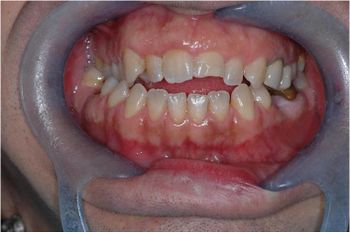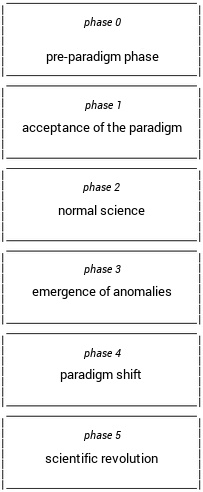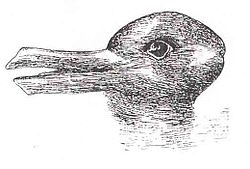'Introduction'
'Introduction'
Abstract
"Masticationpedia" provides an in-depth analysis of paradigm shifts in the realm of dentistry and masticatory rehabilitation, rooted in Thomas Kuhn's seminal theories on scientific revolutions. According to Kuhn, scientific progress is not linear but is marked by episodic paradigm shifts that disrupt normal scientific activities and lead to profound changes in prevailing theories and practices. These paradigm shifts are critical junctures where existing anomalies in the normal science become insurmountable, prompting the scientific community to adopt new frameworks that radically alter the conceptual landscape[1].
In the context of dentistry, traditional methodologies have predominantly focused on mechanical aspects such as tooth alignment, largely within the domain of orthodontics. However, "Masticationpedia" proposes a more expansive view, suggesting that effective dental practice must encompass not only the alignment of teeth but also consider the entire masticatory system, including its neurological connections. This holistic approach recognizes the interdependence of dental health on overall bodily systems, necessitating a more integrated approach to diagnosis and treatment[2].
The document introduces the innovative concept of "metacognitive scaffolds." These tools are designed to enhance problem-solving capabilities and facilitate effective communication across various scientific disciplines. Such scaffolds are particularly crucial in the multidisciplinary field of dentistry, where understanding complex dental and facial anomalies requires insights from multiple scientific fields, ranging from neurology to materials science. This interdisciplinary approach is vital for fostering innovation and improving clinical outcomes[3].
Critically, "Masticationpedia" addresses the prevalent overreliance on statistical measures such as the P-value in research, which often fail to capture the complexity and nuances of clinical phenomena. This critique aligns with a broader call for open science, advocating for research practices that are transparent, collaborative, and inclusive. Such principles are essential in dentistry and other medical fields, where the implications of research directly impact patient care and treatment methodologies[4].
"Masticationpedia" advocates for paradigmatic innovation in the understanding of masticatory sciences. It calls for a shift from traditional incremental improvements to a more systemic and integrated approach. This approach not only considers the mechanical aspects of masticatory function but also incorporates the biological and physiological complexities of the human body, thereby enriching the conceptual framework within which dental professionals operate[5].
A critical part of the document is a clinical case study that challenges traditional views on malocclusion. The study argues that to fully understand such conditions, one must adopt a perspective that includes the neuromuscular and systemic interactions within the masticatory system. This broadened view fosters more effective diagnostic and therapeutic strategies, which are illustrated through improved patient outcomes in the case study presented[6].
Moreover, "Masticationpedia" delves into the philosophical and historical dimensions of scientific knowledge, challenging longstanding assumptions and highlighting the dynamic nature of scientific inquiry. It advocates for a scientific approach that is reflective, open, and modest, acknowledging the limitations of current knowledge and the potential for future discoveries[7].
In conclusion, "Masticationpedia" promotes a patient-centered approach in dental health, aiming to position dentistry at the forefront of scientific innovation and patient care. It encourages the integration of broad philosophical insights and advanced technological research to enhance the efficacy and quality of dental treatment[8].
Overall, "Masticationpedia" challenges conventional dental practices and scientific approaches, proposing an integrated model that enhances understanding and treatment of masticatory disorders. It calls for rethinking the foundations of dental science, advocating for a holistic, integrated, and patient-focused approach that embraces the complexities of human health. This vision is supported by a robust critique of traditional methodologies and a call for embracing new, interdisciplinary paradigms that can lead to significant advancements in dental science and patient care.
Extract of the chapter
Ab ovo[9]
Before diving into the analysis of Masticationpedia, it is necessary to introduce some preliminary considerations. These concern, in particular, two fundamental dimensions - social, scientific, and clinical - that are characteristic of both the current era and the one immediately preceding it.
The phases of paradigm change according to Thomas Kuhn
In the course of the last century, there has been an exponential increase in technological and methodological "Innovations",[10] especially in the field of dentistry. These advancements have significantly influenced decision-making strategies, opinions, schools of thought, and axioms, aiming explicitly at improving the quality of life, as highlighted in the "Science of Exposure in the 21st Century".[11] However, this exponential growth implicitly hides conceptual ambiguities - or, in practical terms, "side effects" - which, although sometimes underestimated, have the power to challenge some scientific certainties, making them less rigid and more subject to probability.[12] The sensitive aspects of the current social, scientific, and clinical reality, which may seem contrasting, will be revealed to be complementary by the end of this reading; this is the "Progress of science" according to Kuhn's interpretation and "Epistemology".
In analyzing the progress of science, Thomas Kuhn, in his most famous work, argues that science develops through distinct cycles, reflecting its operational dynamics.[13][14] ...................
Kuhn's phases in Dentistry
Thomas Kuhn identifies in the evolution of a scientific paradigm five distinct phases, a process that holds crucial importance for Masticationpedia. To stay in line with the project's objectives, we will focus on the description of the three most significant phases, as outlined in the book's index.
Thomas Kuhn in his most famous work states that science cyclically passes through some phases indicative of its operation. According to Kuhn, science is paradigmatic, and the demarcation between science and pseudoscience can be traced back to the existence of a paradigm. The evolution of scientific progress is assimilated to a continuous curve which undergoes discontinuity in paradigm changes.
Kuhn's phases in Dentistry
Kuhn, on the other hand, divides the evolution of a paradigm into five phases; this is a fundamental process for Masticationpedia, but to stay tuned with the project we will limit ourselves to describing the three most significant phases shared in the project and indicated in the index of the book:
It's almost taken for granted that Kuhn's scientific philosophy gives priority to discipline, since an anomaly within the genetic paradigm will be more easily recognized by a geneticist rather than a neurophysiologist. This concept, however, seems to contradict the epistemological evolution of Science, thereby making a detailed analysis of this apparent discrepancy appropriate...................
Epistemology
| The black swan symbolizes one of the historical problems of epistemology: if all the swans we have seen so far are white, can we decide that all the swans are white? Really? |
|
| Kuhn used optical illusion to demonstrate how a paradigm shift can cause a person to see the same information in a completely different way: which animal is the one here aside? Sure? |
Epistemology (from the Greek ἐπιστήμη, epistēmē, meaning "certain knowledge" or "science", and λόγος, logos, "discourse") represents that branch of philosophy dedicated to the study of the necessary conditions for acquiring scientific knowledge and the methods through which such knowledge can be achieved.[15] This term specifically refers to that section of gnoseology that investigates the foundations, the validity, and the limits of scientific knowledge. In English-speaking countries, the concept of epistemology is commonly employed almost as a synonym for gnoseology or theory of knowledge, that is, the discipline that examines the study of knowledge in general.
It is important to emphasize that the central problem of epistemology, today as in the times of Hume, is the issue of verifiability.[16][17]
The Hempel's paradox asserts that the observation of every white swan provides support to the statement that all ravens are black;[18] in other words, every example that does not contradict the theory confirms a part of it. According to this paradox:
According to the criterion of falsifiability, no theory can be considered definitively true, as although there is only a finite number of experiments that can confirm it, theoretically there is an infinite number of experiments that could refute it.[19]
|
But it’s not all so obvious... |
because the very concept of epistemology meets continuous implementations, like in medicine……….
Anomaly vs. Interdisciplinarity
A superficial view might suggest that the epistemic evolution of science is marked by an apparent opposition between the aspects of disciplinarity, highlighted by the "Physics Paradigm of Science" (which sheds light on anomalies), and those of interdisciplinarity, represented by the "Engineering Paradigm of Science" (and the related concept of metacognitive scaffold). However, as will be explored in this chapter, these two perspectives are not actually in conflict; on the contrary, they prove to be complementary, as both contribute to the generation of a "Paradigmatic Innovation" without any form of conflict.
It could then be argued that "Innovations" themselves represent "Progresses of Science," as illustrated in the article "Scientific Bases of Dentistry" by Yegane Guven. This work explores the impact of biological and digital revolutions on education and daily clinical practice in dentistry, covering topics such as personalized regenerative dentistry, nanotechnologies, virtual reality simulations, genomic information, and stem cell research.[20] ............................
Malocclusion
"Malocclusion" derives from the Latin "malum," meaning "bad" or "wrong," and literally refers to an improper closure of the teeth.[21] The notion of "closure" may seem intuitive; however, the adjective "bad" requires careful consideration, as its application in the medical context is less obvious than it may appear.
To approach an understanding of the term, this introduction poses a seemingly simple yet profoundly complex question, which in turn raises a series of related inquiries in the field of masticatory rehabilitation and, more specifically, in orthodontic disciplines: what exactly is meant by "Malocclusion"? It's interesting to note that, in 2019, a search for the term "Malocclusion" on PubMed yielded a whopping 33,309 articles,[22] indicating a lack of uniform terminological consensus on the subject. Among these articles, some may provide conclusions of significant relevance, as strikingly demonstrated by the work of Smaglyuk and colleagues. This particularly significant study explores the interdisciplinary approach in diagnosing malocclusions:[23]
Another noteworthy piece of data emerged when, also in 2019, PubMed was specifically queried for interdisciplinary approaches in diagnosing malocclusions: the results drastically decreased to only four articles.[24]
This observation regarding the topic of "Malocclusion" underscores two critical points: firstly, it highlights a growing awareness of anomalies that could trigger phase 4 of Kuhn's model, suggesting a potential moment of paradigmatic shift. Secondly, it signals a bifurcation in epistemic choices regarding the topic: on one hand, the tendency to generate Incremental Innovations, as evidenced by the other 33,309 articles, and on the other hand, a propensity towards a new gnoseological trajectory that favors a "Paradigmatic Innovation".
To explore the concept of "Paradigmatic Innovation", considered essential in this context, let's begin by posing a specific question:
Another noteworthy piece of data is that if in the same year, 2019, PubMed was queried about the interdisciplinarity in diagnosing malocclusions, the result dropped drastically to only four articles.
These premises regarding the question of "Malocclusion" indicate, on one hand, an alertness to anomalies that tend to trigger phase 4 of Kuhn and, on the other hand, a bifurcation in epistemic choice on the topic: one that generates Incremental Innovations (other 33,309 articles, perhaps) and another that prefers a new gnoseological path of "Paradigmatic Innovation".
Let's try to approach part of the concept that considers "Paradigmatic Innovation" essential, asking, for example:
|
What does "Malocclusion" mean? |
To answer the previously posed question, let's examine a clinical case that clearly exemplifies "malocclusion".
The case involves a patient presenting a type of occlusion commonly defined by orthodontists as "malocclusion", characterized by a unilateral posterior crossbite and an anterior open bite;[25] these conditions represent a form of malocclusion that can be effectively treated through the use of fixed orthodontic appliances, sometimes in combination with orthognathic surgery if necessary.[26] The crossbite is identified as a significant alteration from normal occlusion, which requires concurrent treatment with the open bite due to their functional interrelationship.[27][28][29]
It becomes clear that a deterministic approach to diagnosing such obvious occlusal incongruence might lead to considering both the crossbite and the open bite as both causes and effects of malocclusion, consequently suggesting orthodontic intervention to restore "Normocclusion". This mode of thinking would presuppose that the model (the masticatory system) should be "normalized" with respect to occlusion. Interpreted conversely, this would imply that the occlusal discrepancy is the cause of malocclusion and, by extension, pathology of the Masticatory Apparatus. (Figure 1a).
In the context of a clinical case highlighting the presence of malocclusion, with particular attention to the unilateral posterior crossbite and anterior open bite, the importance of dialogue between dentist and patient emerges. This informative conversation is crucial not only for sharing the diagnosis and treatment options but also for understanding the patient's concerns, expectations, and desires......................
Strategic dental topics for authors to subscribe an article in Masticationpedia
Scientific Paradigms in Dentistry, Thomas Kuhn Paradigm Shift, Epistemology in Dentistry, Masticatory Rehabilitation, Interdisciplinary Dental Research, Malocclusion Treatment, Complex System Theory in Dentistry, Dental Science Innovations, Metacognitive Scaffolds in Science, Holistic Dental Care, Dental Anomalies and Solutions, Scientific Progress in Dentistry, Dental Paradigm Shifts, Dentistry and Epistemological Shifts
- ↑ Kuhn Thomas S, «The Structure of Scientific Revolutions», University of Chicago Press, 2012, Chicago».
ISBN: 9780226458120 - ↑ Proffit William R, «Contemporary Orthodontics», Elsevier, 2019, St. Louis».
ISBN: 9780323543873 - ↑ Ackerman Michael B, «Interdisciplinary Dentofacial Therapy: A Comprehensive Approach to Optimal Patient Care», Quintessence Publishing, 1995, Chicago».
ISBN: 9780867153081 - ↑ Wasserstein Ronald L, «Moving to a World Beyond "p < 0.05"», in Am Stat, 2019».
DOI:10.1080/00031305.2019.1583913 - ↑ Turpin David L, «Paradigm Shifts in Orthodontic Treatment», in Journal of Orthodontics, 2002 – in «Vol. 29».
DOI:10.1093/ortho/29.1.8 - ↑ Smith Paul A, «Malocclusion and its effects on the masticatory system», in Dental Update, 2018 – in «Vol. 45», pp. 25-36.
DOI:10.12968/denu.2018.45.1.25 - ↑ Curd Martin, «Philosophy of Science: The Central Issues», W.W. Norton & Company, 1998, New York».
ISBN: 9780393971750 - ↑ Feine Jocelyne S, «The Role of the Dentist in Modern Health Care», in Journal of Dental Education, 2009 – in «Vol. 73», pp. 1183-1191.
- ↑ Latin for 'since the very beginning'
- ↑ Heft MW, Fox CH, Duncan RP, «Assessing the Translation of Research and Innovation into Dental Practice», in JDR Clin Trans Res, 2019».
DOI:10.1177/2380084419879391 Oct 7:2380084419879391 - ↑ «Exposure Science in the 21st Century. A Vision and a Strategy», Committee on Human and Environmental Exposure Science in the 21st Century; Board on Environmental Studies and Toxicology; Division on Earth and Life Studies; National Research Council.».
ISBN: 0-309-26468-5 - ↑ Liu L, Li Y, «The unexpected side effects and safety of therapeutic monoclonal antibodies», in Drugs Today, 2014, Barcellona».
DOI:10.1358/dot.2014.50.1.2076506 Jan;50(1):33-50 - ↑ Thomas Samuel Kuhn (Cincinnati, 18 luglio 1922 – Cambridge, 17 giugno 1996) was an American philosopher of science.
See Treccani, Kuhn, Thomas Samuel. Or Wikipedia, Thomas Kuhn. - ↑ Kuhn Thomas S, «The Structure of Scientific Revolutions», Univ. of Chicago Press, 2012, Chicago».
ISBN: 9780226458113 - ↑ The term is believed to have been coined by the Scottish philosopher James Frederick Ferrier, in his Institutes of Metaphysic (p.46), of 1854; see Internet Encyclopedia of Philosophy, James Frederick Ferrier (1808—1864).
- ↑ David Hume (Edimburgo, 7 maggio 1711[1] – Edimburgo, 25 agosto 1776) was a Scottish philosopher. He is considered the third and perhaps the most radical of the British Empiricists, after the Englishman John Locke and the Anglo-Irish George Berkeley.
- ↑ Srivastava S, «Verifiability is a core principle of science», in Behav Brain Sci, Cambridge University Press, 2018, Cambridge».
DOI:10.1017/S0140525X18000869 Jan;41:e150. - ↑ Here we obviously refer to the well-known paradox called "of the crows", or "of the black crows", formulated by the philosopher and mathematician Carl Gustav Hempel, better explained in Wikipedia's article Raven paradox:
See Good IJ, «The Paradox of Confirmation», in Br J Philos Sci, 1960 – in «Vol. 11». - ↑ Evans M, «Measuring statistical evidence using relative belief», in Comput Struct Biotechnol J, 2016».
DOI:10.1016/j.csbj.2015.12.001 Jan 7;14:91-6. - ↑ Guven Y, «Scientific basis of dentistry», in J Istanb Univ Fac Den, 2017».
DOI:10.17096/jiufd.04646 51(3): 64–71. Published online 2017 Oct 2. PMCID: PMC5624148 - PMID: 29114433 - ↑ The creation of the term is generally attributed to Edward Angle, considered the father of modern orthodontics, who coined it as a specification of occlusion to signal the incorrect opposition in closing of the lower teeth and upper, especially the first molar; see Gruenbaum T, «Famous Figures in Dentistry», in Mouth – JASDA, 2010». , 30(1):18.
- ↑ Pubmed, Malocclusion
- ↑ Smaglyuk LV, Voronkova HV, Karasiunok AY, Liakhovska AV, Solovei KO, «Interdisciplinary approach to diagnostics of malocclusions (review)», in Wiad Lek, 2019». 72(5 cz 1):918-922.
- ↑ Pubmed, interdisciplinary diagnostics of malocclusions
- ↑ Littlewood SJ, Kandasamy S, Huang G, «Retention and relapse in clinical practice», in Aust Dent J, 2017».
DOI:10.1111/adj.12475 Mar;62 Suppl 1:51-57. - ↑ Reichert I, Figel P, Winchester L, «Orthodontic treatment of anterior open bite: a review article--is surgery always necessary?», in Oral Maxillofac Surg, 2014».
DOI:10.1007/s10006-013-0430-5 Sep;18(3):271-7. - ↑ Miamoto CB, Silva Marques L, Abreu LG, Paiva SM, «Impact of two early treatment protocols for anterior dental crossbite on children’s quality of life», in Dental Press J Orthod, 2018». Jan-Feb; 23(1) 71–78.
- ↑ Alachioti XS, Dimopoulou E, Vlasakidou A, Athanasiou AE, «Amelogenesis imperfecta and anterior open bite: Etiological, classification, clinical and management interrelationships», in J Orthod Sci, 2014».
DOI:10.4103/2278-0203.127547 Jan-Mar; 3(1): 1–6. - ↑ Mizrahi E, «A review of anterior open bite», in Br J Orthod, 1978». Jan;5(1):21-7.
particularly focusing on the field of the neurophysiology of the masticatory system





